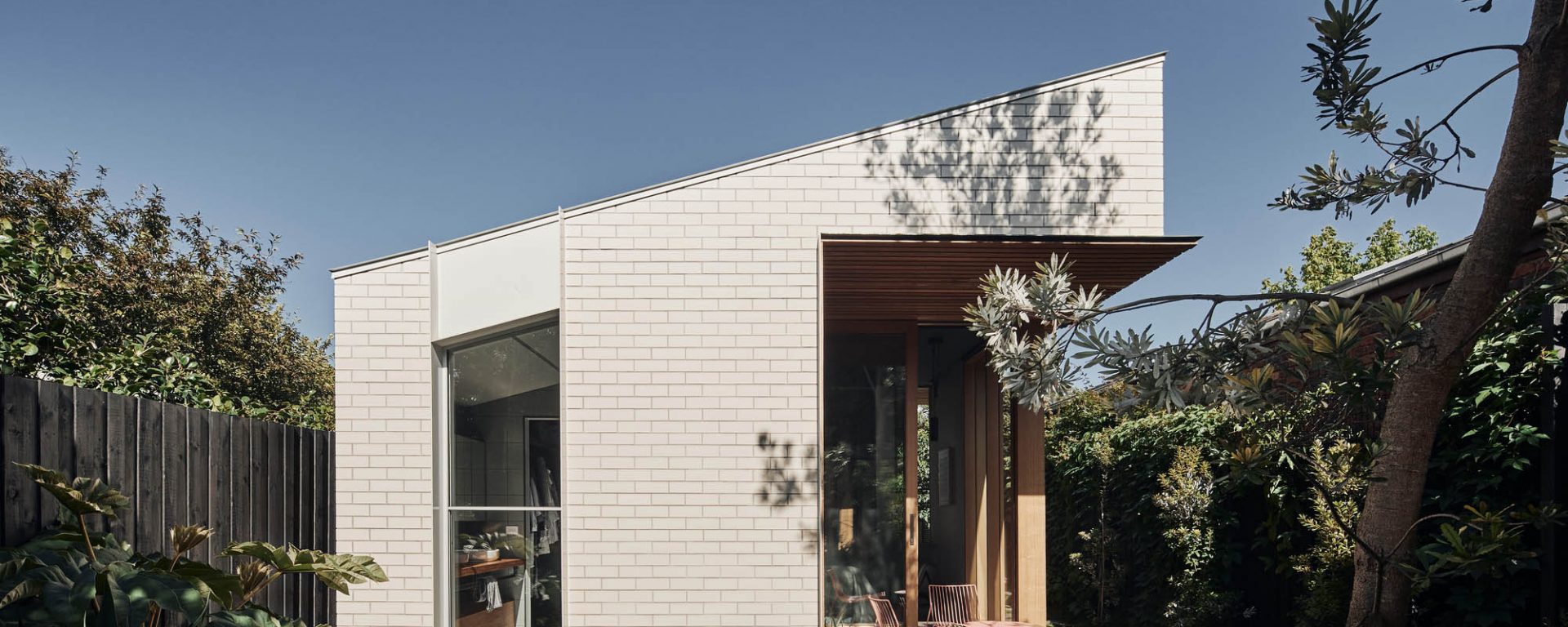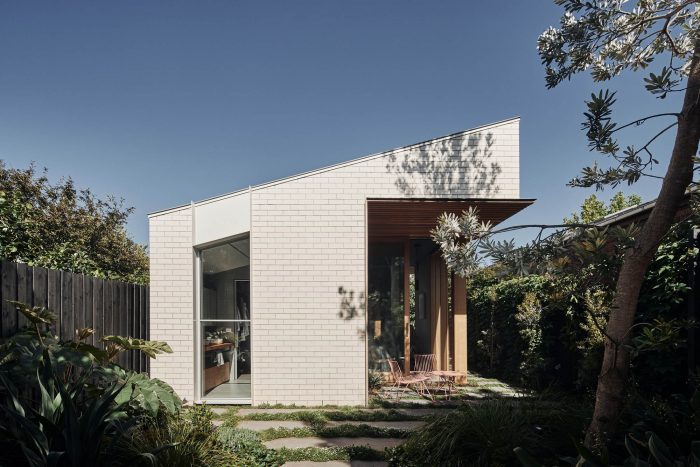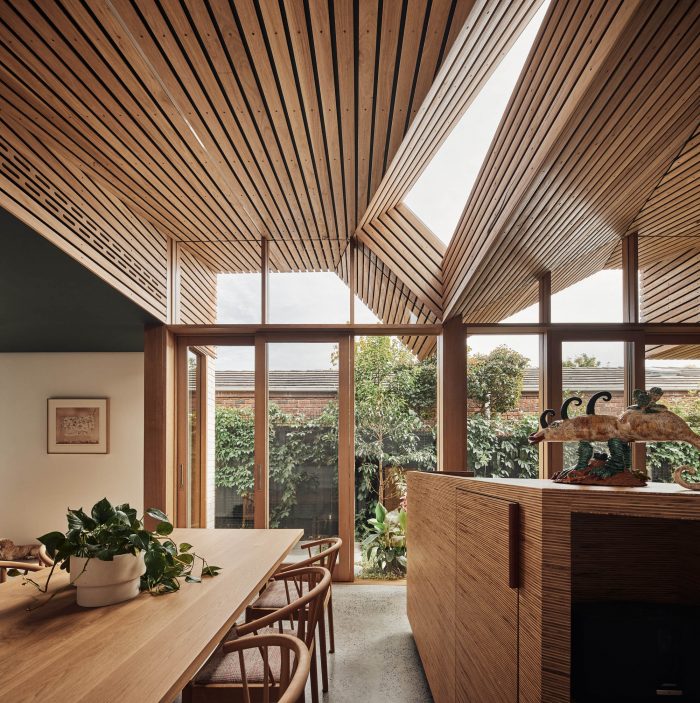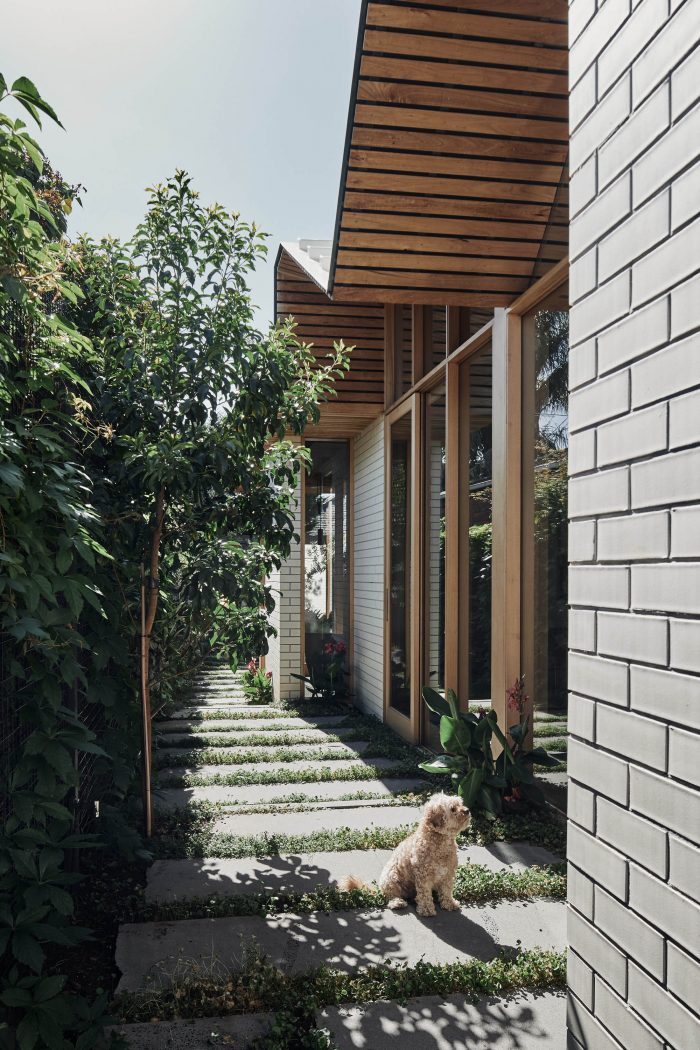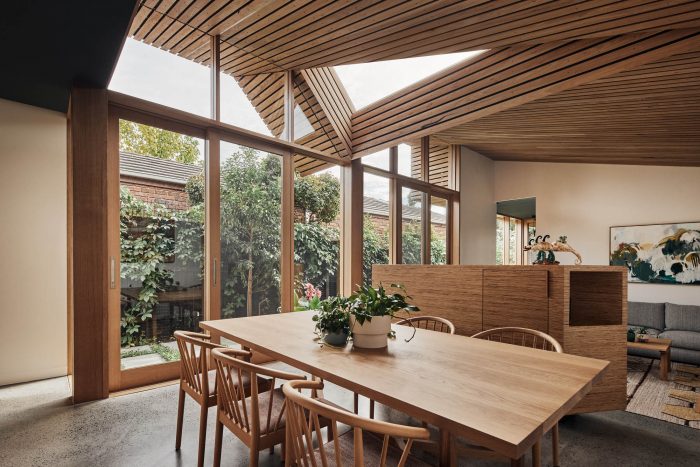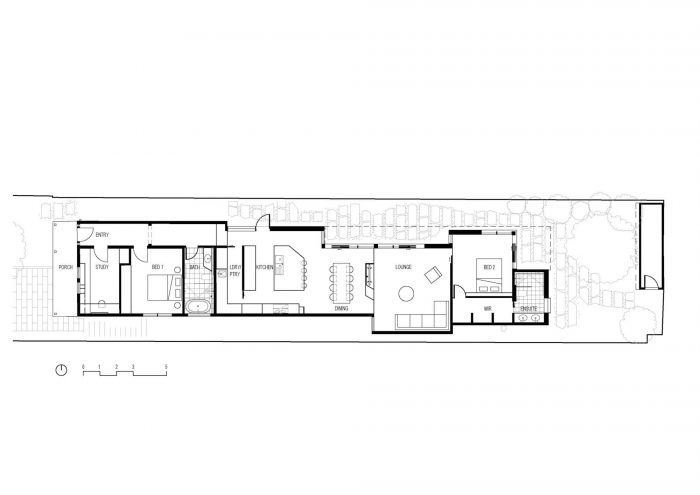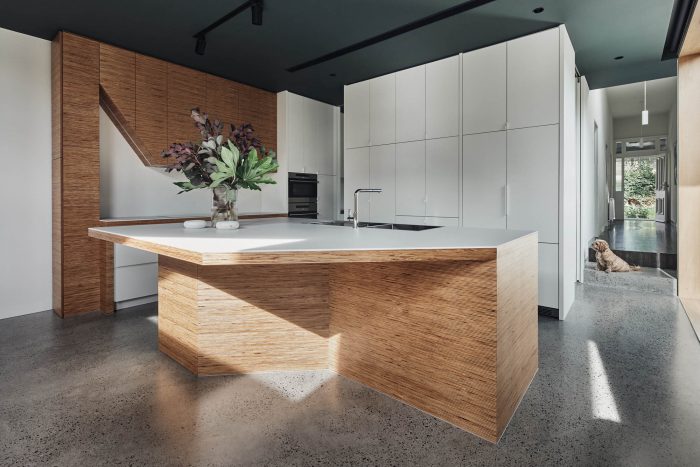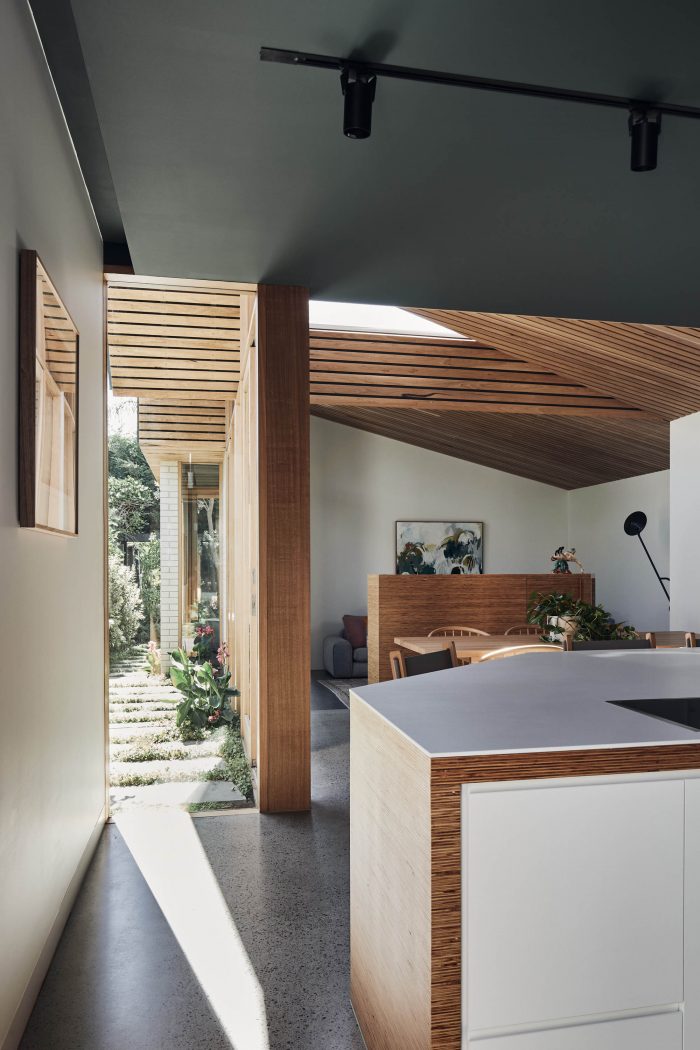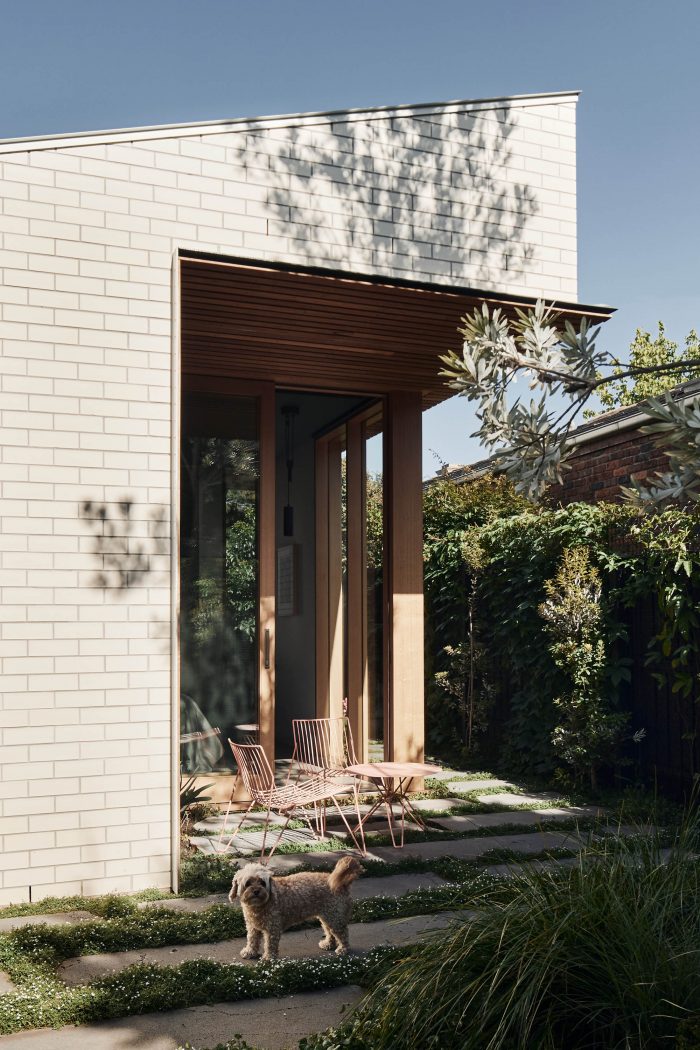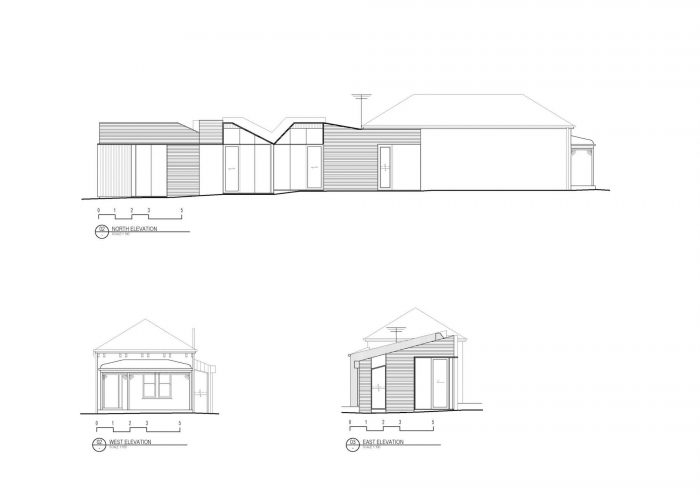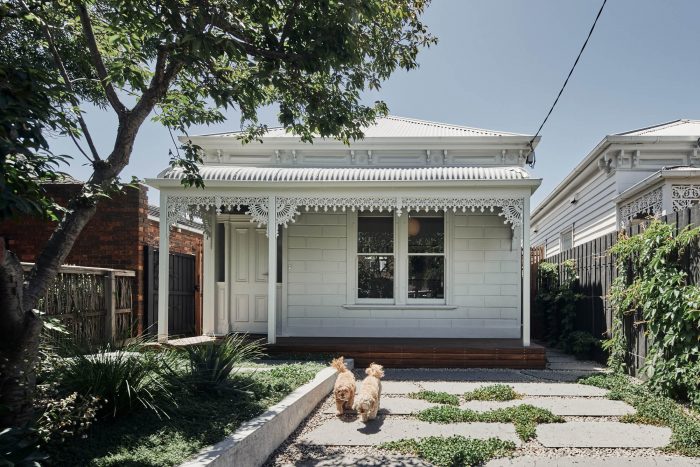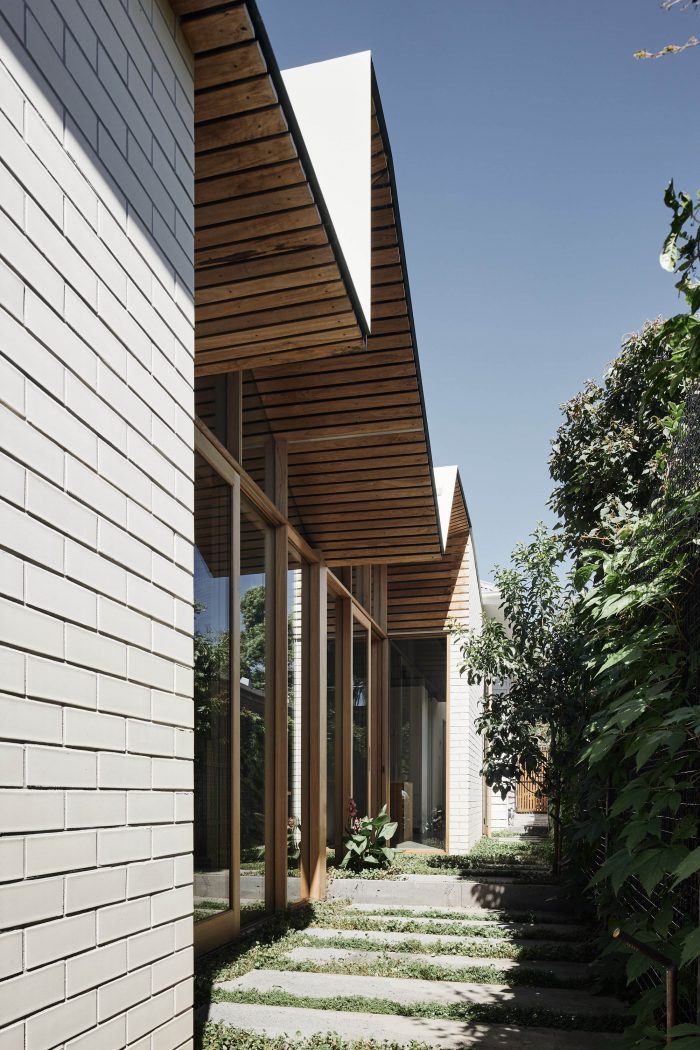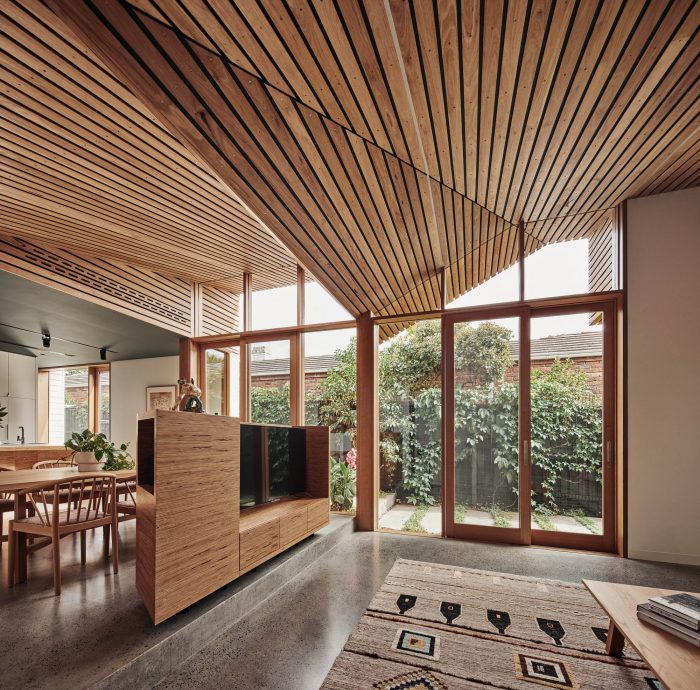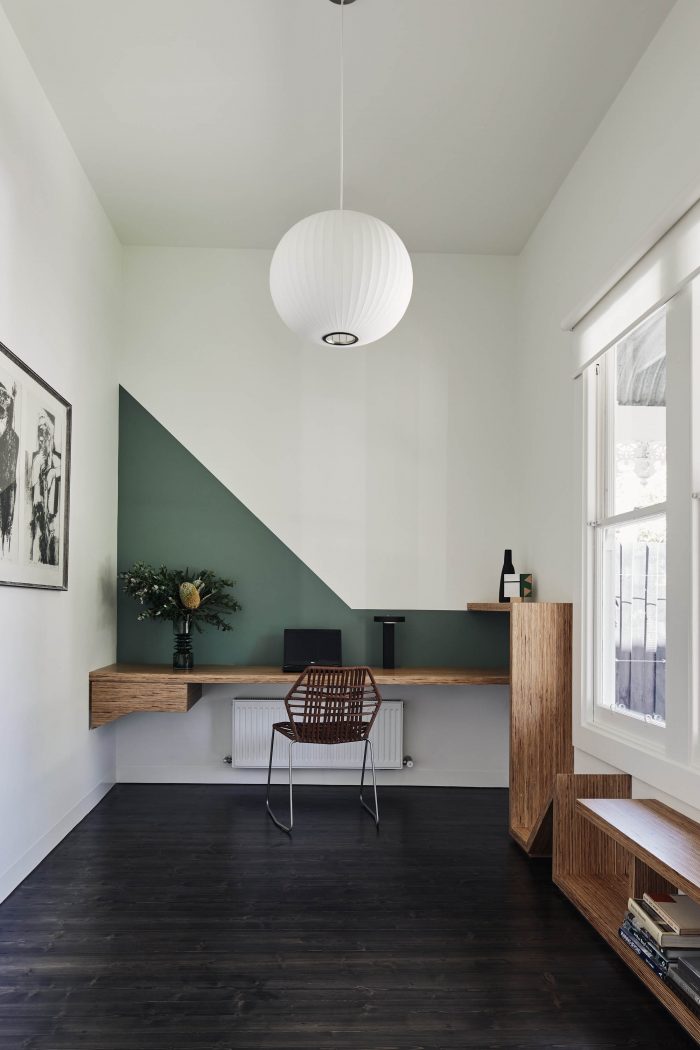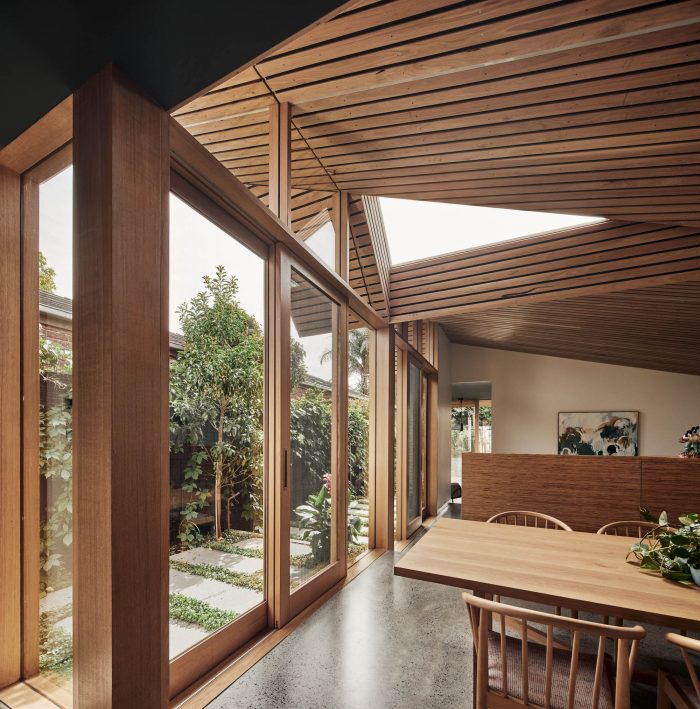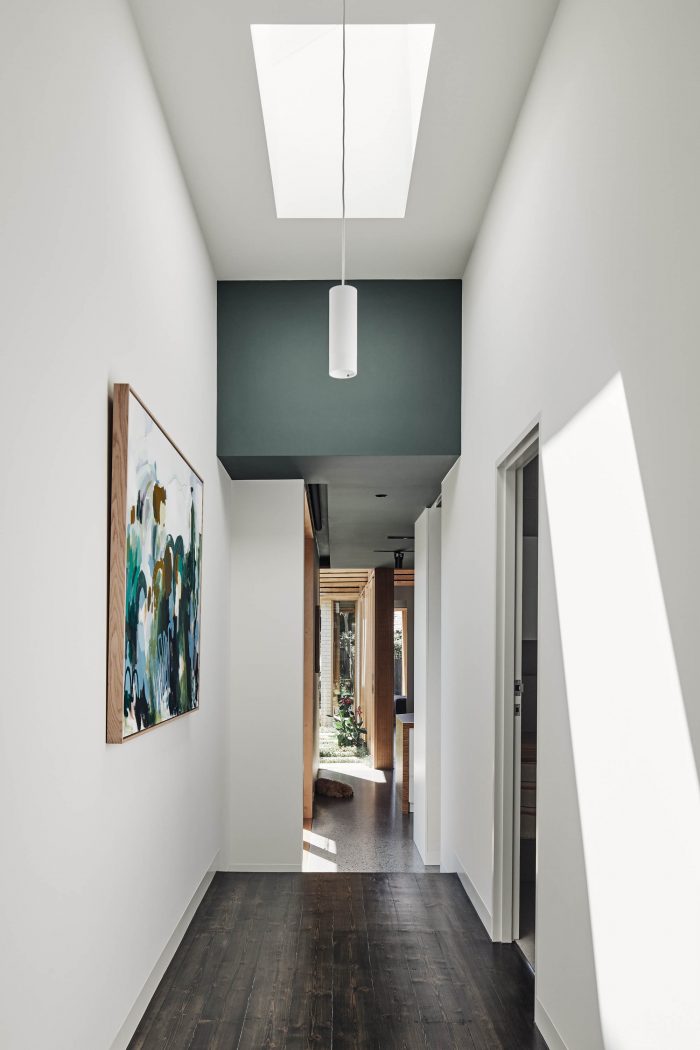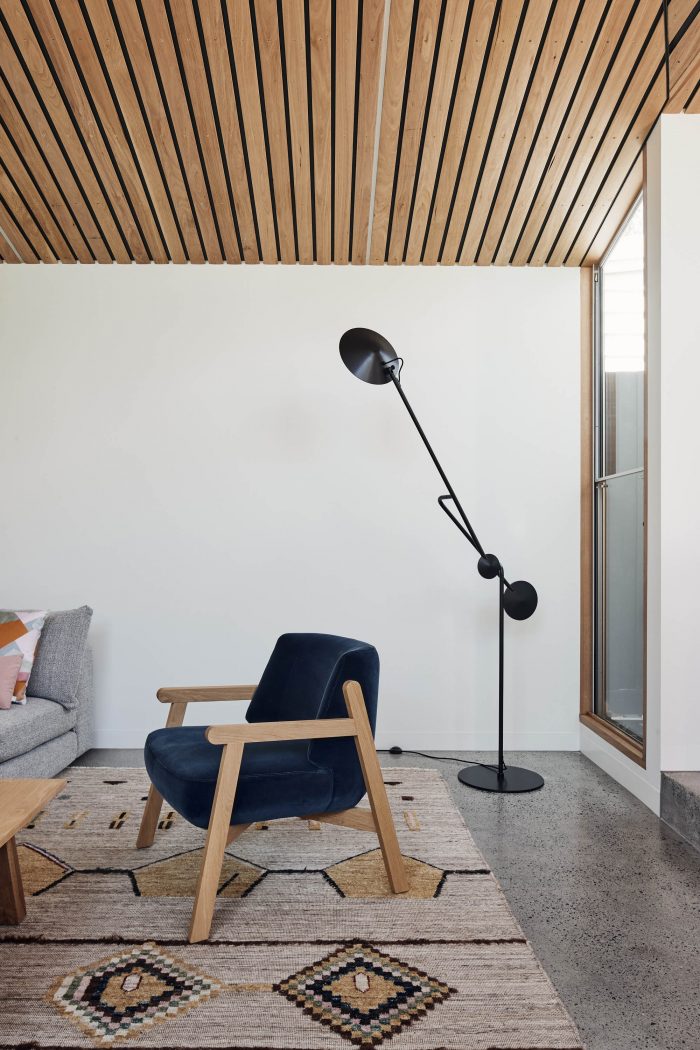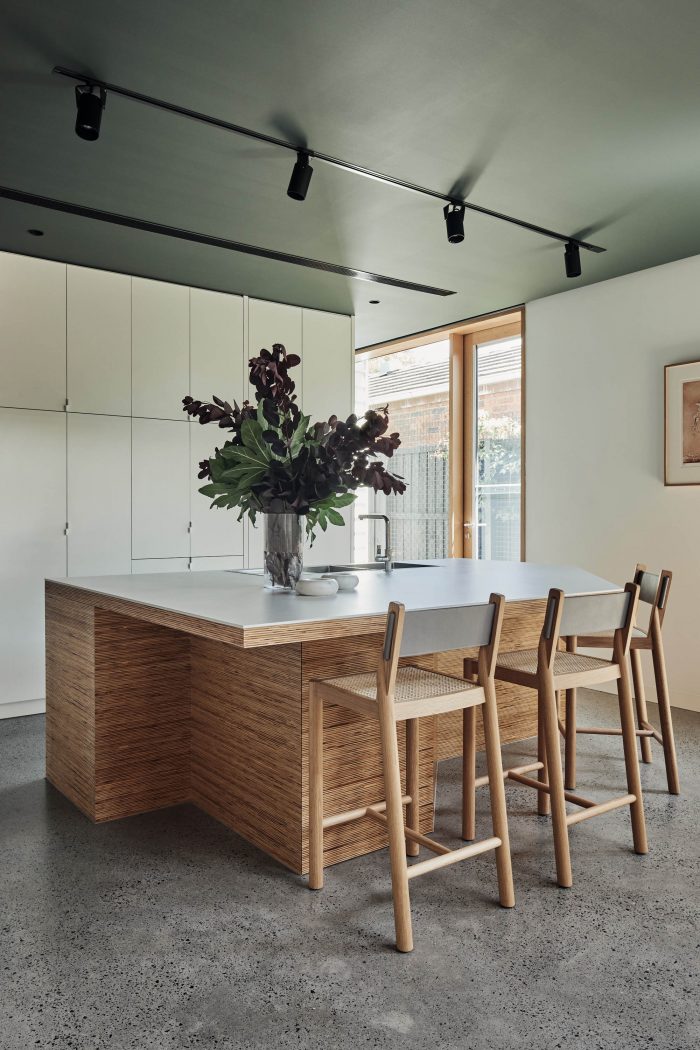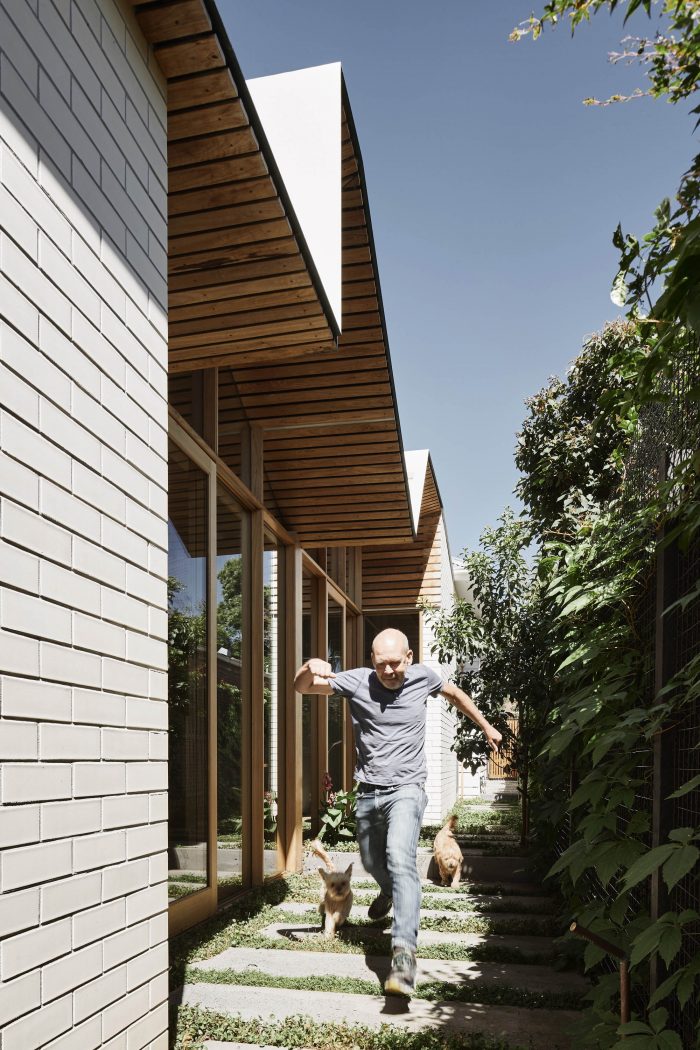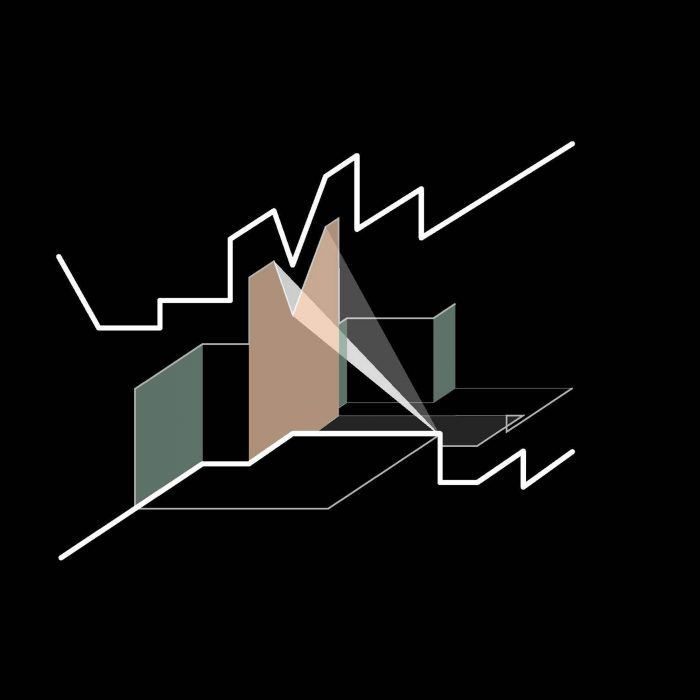涟漪之家是一系列由场地和光线的微妙变化定义的展开空间。该项目被巧妙地安置在一个单面的维多利亚式外墙后面,重新创造了以前互不相连的平面图,创造了一个与花园相连的高度适应性的家庭住宅。建筑围绕着回响和进展展开叙述,利用 “涟漪 “的概念来探索灵巧的形式,调解场地的平缓下降和对室内的相关影响。
The Ripple House is a series of unfurling spaces defined by subtle shifts in the site and light. Discreetly positioned behind a single-fronted Victorian façade, the addition reinvents the previously disconnected floorplan, creating a highly adaptable family home connected to its garden. The architecture develops a narrative around reverberation and progression, drawing on the ‘ripple’ notion to explore deft forms that mediate the descent of the site’s gentle fall and associated impact on the interior.
卧室的传统顺序被保留为书房和客房,而浴室则被精心地重新设计。新旧交替的标志是地板水平和饰面的变化–从木材到混凝土,降低的天花板以深绿色饱和。厨房的橱柜采用了简洁的白色饰面,与雕塑般的层板形式并列。岛式长椅具有宽阔的比例,其形式与波纹状的天花板相呼应,为非正式的娱乐活动创造了一个直观的聚会区。
The traditional sequence of bedrooms is maintained as a study and guest room, while the bathroom is thoughtfully re-worked. The junction of old and new is marked by a change in floor level and finish – from timber to concrete, with a lowered ceiling saturated in deep green. Kitchen cabinetry is recessive with crisp white finishes, juxtaposed with sculptural ply forms. The island bench has broad proportions with forms responding to the rippling ceiling, creating an intuitive gathering area for informal entertaining.
除此之外,一个引人注目的银顶白蜡的波纹天花板界定了新扩建部分的主要体积。折叠的形式曲折地捕捉邻近的砖块边界墙上方的北方光线,同时沿南部边界低垂,让邻居们享有同样的特权。连接处被精心设计,以达到一种克制的感觉。一个 “弹簧点 “固定了天花板的布置,一个三角形的天窗吸引了早晨的光线,在餐厅和休息室之间创造了强烈的定义。
Beyond, a striking rippled ceiling in silver-top ash defines the principal volume of the new extension. Folded forms crank to capture northern light above the neighboring brick boundary wall, while raking low along the southern boundary to allow neighbors the same privilege. Junctions were meticulously detailed to achieve a restrained sensibility. A ‘springing point’ anchors the ceiling arrangement, with a triangular skylight drawing in morning light and creating strong definition between dining and lounge volumes.
一个棱角分明的层板单元坐落在雕塑般的对话中,以一种精致而优雅的姿态容纳了公共设施,在保持视觉连接的同时加强了空间之间的定义。可操作的玻璃将起居室与北部边缘的狭长的阶梯式花园结合起来,扩大了室内面积,给人以规模和宽广的感觉。波纹状的木质天花板沿着这条主干线突出,在空中形成一条倒置的通道。
An angular ply unit sits in sculptural dialogue below, housing utilities in a refined and elegant gesture, reinforcing the definition between spaces while maintaining visual connections. Operable glazing unites the living room with a narrow, stepped garden along the northern edge, extending the interior footprint to give a sense of scale and generosity. The rippled timber ceiling projects along this spine, creating an inverted pathway in the sky.
一扇宽大的推拉门通向主卧室,提供了通向东边花园的视野。在这里,一个镜面棚反映了阶梯式花园和波纹天花板的郁郁葱葱的纹理,似乎跨越了整个场地的长度。当推拉门关闭时,主卧室的体验变得亲密而隐秘。穿过长袍,通向以桉树瓷砖装饰的触感套房,与自然界的自然和平静色调相呼应,在晨光中洗礼。
A wide sliding door opens to the main bedroom, offering views through to the eastern garden. Here, a mirrored shed reflects the lush textures of the stepped garden and rippled ceiling, appearing to span the full length of the site. When the sliding door is closed, the experience of the master bedroom becomes intimate and secluded. A walk-through robe leads to a tactile en-suite finished in eucalypt tiling, responding to the natural and calming tones of nature, washed in morning light.
Ripple House是围绕可持续建筑实践的核心原则设计的。混凝土板通过吸收北方的阳光来提供有效的热质量,而雨篷则在较热的月份为室内提供遮阳。墙壁和天花板是高度绝缘的,而窗户是双层玻璃,有效地控制了热和声性能。自然和当地的材料受到青睐,包括银顶白蜡木、层压板、木材和砖头。家具是澳大利亚设计和制造的,同时穿插了一些复古家具。波纹状的天花板结合了节能的LED灯带,用光的线条使几何形状变得生动,在白天和夜晚之间改变了天花板的影响。这座房子表达了实用主义与光线和场地之间的创造性回响之间的持续游戏。
Ripple House is designed around the core tenets of sustainable building practice. The concrete slab provides effective thermal mass by absorbing northern sun, while the canopies offer shade to the interior in the hotter months. The walls and ceiling are highly insulated, while windows are double-glazed, effectively controlling thermal and acoustic performance. Natural and locally sourced materials are favored, including silver top ash, ply, laminate, timber and brick. Furniture is Australian designed and made, while interspersed with vintage pieces. The rippled ceiling combines energy-conscious LED strips, animating the geometry with lines of light, transforming the impact of the ceiling between day and night. The house expresses a continual play between pragmatics and the creative reverberations between light and site.
Architects: FMD Architects
Area: 160 m²
Year: 2020
Photographs: Peter Bennetts
Manufacturers: Dulux, MAXI Plywood, Lysaught, Radial Timbers
Builder: B.F.C. Built
Structural Engineer: Marcon Tedesco O’Neill Consulting Engineers
Design Team:Fiona Dunin, Alice Edwards, Jayme Collins, Robert Kolak
City:Melbourne
Country:Australia

